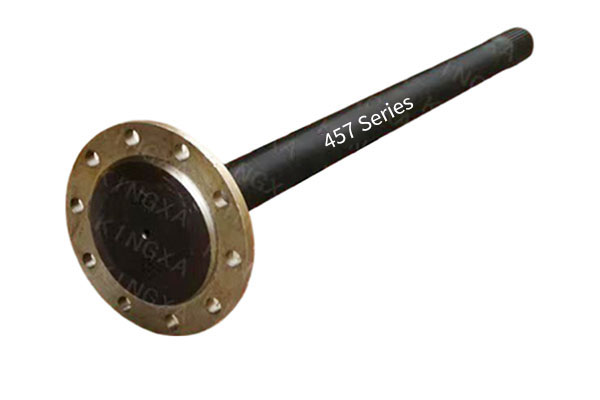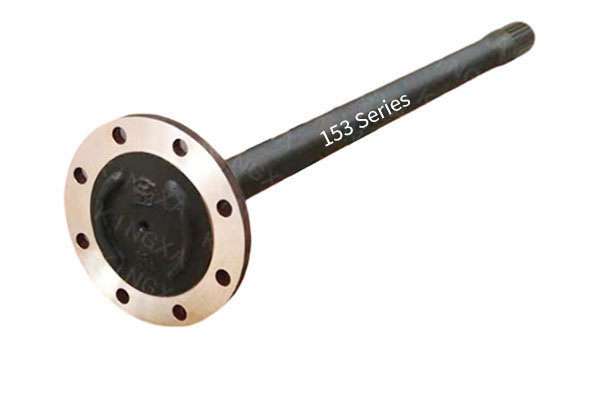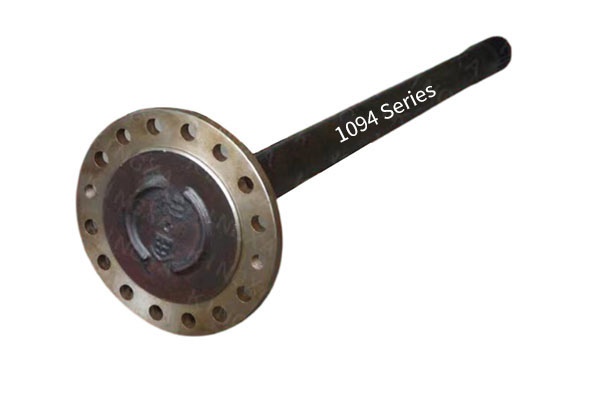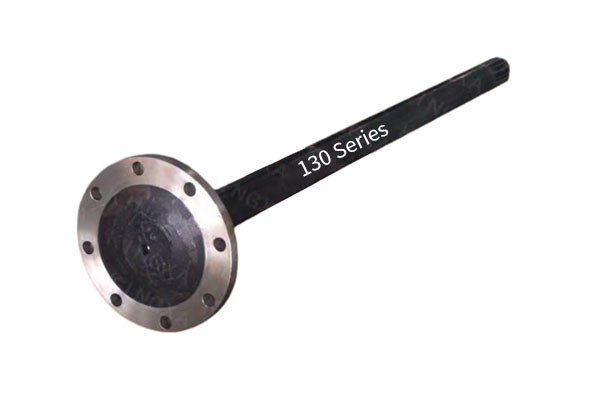How is the service life of a mid-size car rear axle half shaft related to driving habits? Will frequent sudden acceleration or braking accelerate its aging?
Release Time : 2025-07-21
The service life of the mid-size car rear axle half shaft is directly related to driving habits, especially the sudden acceleration behavior will significantly affect its fatigue life. During sudden acceleration, the engine output torque surges instantly, and the half shaft needs to withstand an impact load far exceeding the rated value in a short period of time - for example, the torque of the half shaft during normal driving is about 300-500N・m, while during sudden acceleration, it may surge to 800-1000N・m. This instantaneous overload will cause the stress cycle number inside the half shaft material to reach the fatigue limit in advance. The half shaft that can originally withstand 100,000 stress cycles may be reduced to 60,000-70,000 times under frequent sudden acceleration, directly shortening the service life.
The damage caused by sudden braking to the mid-size car rear axle half shaft is reflected in the dual effects of reverse torque and stress concentration. When braking, the braking force of the rear wheel will be transmitted to the half shaft through the wheel hub, forming a torque opposite to the driving direction. This reverse force will cause shear stress at the spline connection of the half shaft. If you brake suddenly frequently, the spline tooth surface will have root cracks due to repeated alternating loads, especially the fillet part where the spline and the shaft body transition, which is itself a stress concentration area. The cracks will gradually expand until they break. Data shows that the wear rate of the half-axle splines of vehicles that are accustomed to sudden braking is 2-3 times that of vehicles that brake smoothly, and the risk of fracture is increased by more than 40%.
Long-term driving habits of "hard acceleration and hard braking" will cause the half-axle to fall into a "high stress cycle" state and accelerate material aging. Under continuous impact loads, the microstructure of the half-axle material (such as 40Cr steel) will have dislocation accumulation and grain boundary damage, which is manifested as a gradual decrease in material hardness and weakening of toughness. When this damage accumulates to a certain extent, brittle fracture may suddenly occur even under the torque of normal driving. Laboratory simulation shows that the average service life of the half-axle of vehicles with aggressive driving style is only 60%-70% of that of vehicles with gentle driving.
Bad driving habits under different road conditions will cause superimposed damage. When accelerating suddenly on a bumpy road, the half shaft not only has to bear torque, but also has to take into account the radial force caused by the body bouncing, forming a composite stress state. For example, when accelerating suddenly on a pothole section, the half shaft may bear torque and radial bending force at the same time. At this time, the stress value of its weak parts (such as the connection between the journal and the flange) will be more than 50% higher than that on a flat road. This superposition effect will cause the aging speed of the half shaft to increase nonlinearly, and visible deformation or cracks may appear in a short period of time.
Smooth driving can create a stable stress environment for the half shaft and extend its service life. When driving at a constant speed, the torque fluctuation amplitude of the half shaft is less than 5%, the stress cycle is in a stable state, and the fatigue damage rate of the material is significantly slowed down. At the same time, smooth shifting can avoid sudden changes in the output torque of the gearbox and reduce the impact on the half shaft. The use data of operating vehicles such as taxis show that the service life of mid-size car rear axle half shaft can exceed 300,000 kilometers for vehicles with a smooth driving mode and regular maintenance, while the half shaft life of similar vehicles with aggressive driving style often needs to be replaced within 200,000 kilometers.
Driving habits can also indirectly affect the axle by affecting other components. Tire slippage caused by sudden acceleration can cause additional torsional vibration of the axle. This high-frequency vibration will aggravate the wear of the spline tooth surface and increase the clearance between the axle and the wheel hub bearing. When the clearance increases, the radial runout of the axle increases, further amplifying the stress concentration effect, forming a vicious cycle of "wear-increased clearance-more severe wear". Therefore, good driving habits not only directly protect the axle, but also reduce the chain damage of related components.
Reasonable driving combined with regular maintenance can maximize the service life of the axle. Avoid sudden acceleration and braking when driving, and slow down in advance by predicting the road conditions, so that the number of stress cycles of the axle can be controlled within a safe range. At the same time, regularly check the wear of the axle spline and the straightness of the shaft body according to the maintenance manual, and replace the worn wheel hub bearing in time to avoid the continuous deterioration of the bad state. For medium-sized vehicles that are often overloaded, more attention should be paid to driving softness, because the heavy load itself has made the axle work close to full load, and any aggressive operation may become the fuse for accelerated aging.







